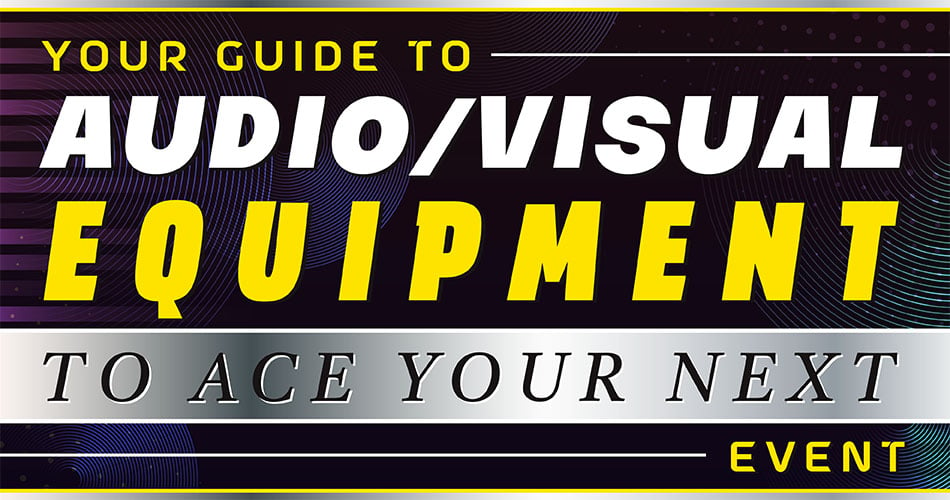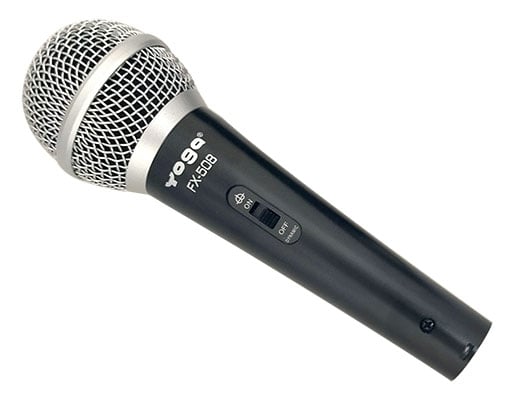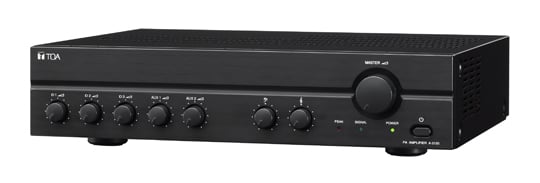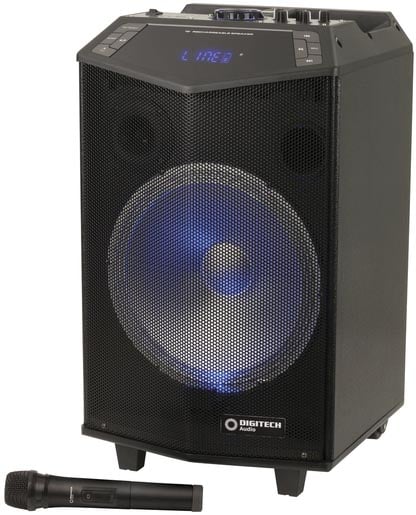Your Guide to Audio-Visual Equipment to Ace Your Next Event
March 7, 2023

Having a good understanding of audio-visual equipment — the AV technology itself — is crucial. This ensures any audiovisual presentation goes off without a hitch.
To help you get started on the right foot, this beginner-friendly guide has got you covered! Here, it covers all the necessary features and functions of an AV system. Plus, some things to consider to make your audio-visual endeavour successful!
Audio-Visual Equipment: AV Technology
Technology has come a long way in audio-visual equipment, and it continues to evolve. Today, you will find AV technology almost everywhere, including workplaces, schools and homes. If you are new to the AV sphere, going over some of the basics will help.
Audio-visual equipment is a set of devices consisting of audio and visual elements. This can include anything that projects AV effects, like speakers, microphones and monitors.
When it comes to events, AV equipment is indispensable. It allows the presenter to engage and stoke excitement from the audience. As well as provide clarity and a better understanding of the subject matter of the event.
Main Audio-Visual Equipment
There is a wide range of AV equipment used for different purposes in varying situations. But below are the main components, including how they work together:
1. Microphones
Microphones are the “ears” of any audio-visual equipment setup. They are typically used in events where there needs to be a clear and accurate sound capture.
The most common types include:
- Dynamic (the most widely used)
- Condenser (more sensitive than dynamic)
- Ribbon (produce deep bass tones)
But you also might come across wireless dynamic and wireless condenser. Wired microphones are great for reliable audio projection. But this can mean the presenters may have limited freedom in audio interaction. Non-wired, in contrast, are good options if you rely on crowd interaction. It allows the hosts to move around the space wherever they want. Yet, it may lose frequency, causing the audio to drop out.
Microphones unite your crowd, making sure no one feels left out. To ensure they can hear everything, equip your AV setup with the right microphones!
Get your microphones below!

Studio Quality Handheld Microphone
Product code: ATC0392
Designed on the classic Shure™ Bros SM-58. With features such as sturdy diecast housing with a silent ON/OFF switch. Plus, a 6-metre high-quality lead and XLR connectors. You also get a mic clamp, protected with foam inserts and a carry case.
This mic is sure to impress, and it competes in a high-end market without the high price tag!

Microphone Dynamic Unidirectional Professional
Product code: JAM4099
A dynamic microphone with a professional design and a cardioid polar pattern. Features excellent frequency response with tough metal construction. It also minimises background noise and feedback. Suitable for use in theatres, public address systems, and recording applications.
2. Amplifiers
An amplifier enables the sound signal captured by a microphone to be heard clearly. The sound is sent through it, which then amplifies the weak signal by boosting its output power.
Amplifiers come in two forms:
- Integrated amplifiers, which combine the amplifier with other components such as signal filters.
- Standalone amplifiers, which can remain separate from other components.
Get your amplifier below!

Public Address Amplifier 30 Watt TOA A2030D
Product code: PA0030D
A high-cost-performance mixer power amplifier. Suited for broadcasting paging or background music in various large venues, including schools.
Also available in 60Watt (PA0060) and 120Watt (PA0120).
3. Projectors
One of the most common pieces of audiovisual technology is the projector. Projectors display images or videos on a large surface, such as a wall or screen. The presenters control what is displayed using a remote or through a laptop connected to it.
Screens come in various types, depending on the brightness levels, for instance. Some models come in low gain or ambient light rejector (ALR) screens. They reject ambient light, making them suitable for all lighting conditions. Those with high gain, meanwhile, offer more reflectivity.
4. Speakers
Audio plays an important role in any AV setup. Cue the speaker, which makes what is being said clear to hear.
Speakers boost volume levels to ensure clarity during presentations or performances. They come in many shapes and sizes, from full-size floor models to wall-mounted ones. You will also find discreet ceiling units as well as mini desktop speakers.
Depending on your needs, you may want full-range stereo speakers. They are ideal if you want clearer audio with low frequencies. Or, opt for multiple speakers if you need extra power and clarity.
Get your portable PA speaker below!

12″ Portable PA Speaker System with Wireless Microphone
No longer available
Product code: JCS2497
This portable PA speaker comes with a wireless microphone, making it an all-in-one unit. An ideal choice for your next party or event!
Packed with features such as Bluetooth and an FM radio built into the system. You will have hours of playback thanks to the rechargeable battery (3 to 6 hours). It also has USB and SD card ports to load up your music and let it run.
5. Cables
Cables are what enable your projectors and speakers to render video and audio. Audio cables connect input microphones to receivers like amplifiers. Whereas video cables transmit images from sources like cameras to monitors, e.g. TV sets at venues.
Common types of audio cables include:
- S/PDIF RCA. Outputting audio over short distances.
- XLR. Delivering balanced microphone and line-level signals over long distances.
- Speakon. Connects loudspeakers to amplifiers.
- TS. Combines mono, unbalanced signals.
- TRS. Connecting mono, balanced signals and stereo signals.
- RCA. Connects devices like DVD players to TV sets or CD players to receivers.
- MIDI. Connecting electronic music devices such as drum machines to your computer.
- USB. Connects computers to peripheral devices such as cameras, printers, etc.
- Firewire. Adding peripherals to a computer.
- ADAT. Transferring 8 channels of digital audio over a single fibre optic cable.
Common types of video cables include:
- Composite AV cable. The standard RCA cable that features yellow, red, and white colour-coded connectors.
- Coaxial cable. All televisions come with a coaxial input. But this type of cable is most used for satellite TV, set-top boxes, and gaming consoles. It is also widely used in broadcast applications.
- Digital Visual Interface (DVI). DVIs are digital-to-digital cables with minimal interference. This allows for sharper images and more vibrant colours.
- High-definition Multimedia Interface (HDMI). Most computers can be connected to other TVs or monitors with a HDMI cable.
Things to Consider
Event venues have complex settings with many moving parts. There is so much going on that a missing piece in an AV setup can cause disorder. Thus, it is important to ensure all your audio-visual equipment works and is complete.
What could go wrong? Several things can happen that can interrupt your production quality. One of the most common failures is the audio. Ensuring presenters know where to walk and where to avoid is an effective way to avoid feedback.
Soundcheck also ensures you troubleshoot any feedback due to frequencies around the room. Skipping this process can lead to some unforgiving instances during your event.
The display is also everything, keeping the audience keen. If you misjudge the size of the presentation, you may lose interest. You should take note of the venue size and anything that may interfere with your display, as well.
Besides testing your audio-visual equipment before the event, consider your crowd’s needs. Doing so can ensure you minimise the risks of technical failures and ensure you cater to your viewers.
Other things to consider:
Electrical supply
Will you have a high production value presentation with many systems working simultaneously? If so, consider the venue’s limitations. This will help ensure you have a constant flow of electricity that does not slow down your systems.
In such cases, you may have to invest in or rent generators to boost the electricity supply. Most venues, though, may already have the capacity for this. But to make sure, research the venue beforehand.
Technicians
Technicians operate your audio-visual equipment, e.g. cameras and lighting. These professionals can quickly troubleshoot any issues. As for how many you should have, this will depend on the size of your project.
Overall, it may be best to have one to operate each AV solution. For example, one technician operates your video wall and another for the sound or speakers.
Your project needs
Think of your own event needs. Only invest in the necessary equipment, and do not waste time and resources on things you may never use. This is also important for taking your personal AV abilities into account.
This article was originally published in October 2020 and has been updated.
© Electrotech Brands Pty Ltd 2023


Write a Comment
You must be logged in to post a comment.